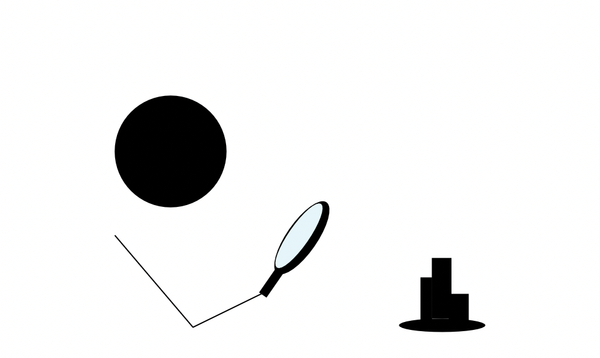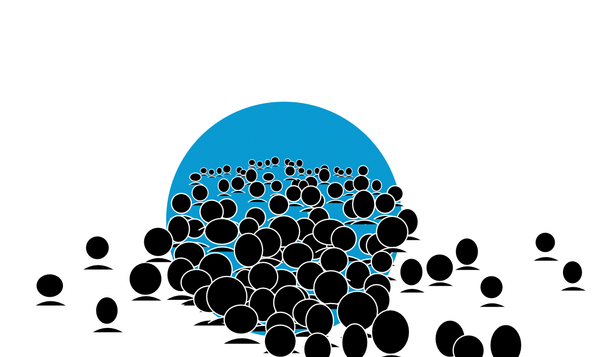Another phase shift in design
Originally published on Medium.

Design has changed through the years, and I think we’re entering another shift in how design is approached, used, and potentially impactful.
I say this because so much of the short form of what I read (posts, blogs, articles) is angry, frustrated, or scared. UX researchers are ready to call UX a failure of the human conditions they study, and move on to another label. Some UX designers are ready to vote research off the island; some are focusing on visual designs (which, honestly, is about the business, its culture, AND the designer) to delineate who should be allowed to stay in UX. This has happened before in design industries, and will happen again. It’s a reaction.
Specifically, it’s a reaction to the recent tech purges. It’s a composite of: a sense of personal failure; anger at being left to fend for ourselves when our jobs took everything we’d give them and ask for more; the trial-like interview environment that has been built, and seems to be getting worse; the shifting sands of expectations around location, and the short-sighted ways that pressure is being applied to go back to the way it was; and the sense that we each individually invested so much (our time, our passion, years of commuting and outside-work-hours studying, our expensive degrees and certificates, our social lives, our health and mental wellbeing, to name some of those that come up frequently). If jobs are scarce, it’s human to try to make ourselves feel like we’re the ones with a shot at landing something. Job=survival in our current system.
The system of factors affecting this go far beyond the design realm. It’s our financial system, and how so much goes to profit and just enough goes to supporting and investing in the human element. It’s how there seems to be nowhere left to be near offices and find housing that is within financial reach, and yet small towns are dying. It’s systems of gaslighting (Design for Safety explains it brilliantly) where hardship is ”obviously” an individual fortitude fault, not usurious behavior made acceptable. It’s a wide breadth of changes coming up all at once, where we see a minority of cultural sentiment enacting laws that are not widely supported; burning forests turning skies orange leagues away and insurance sounding a call of ‘no more’ before our mob minds have accepted reality; generative AI alternately terrifying and delighting us. This is all happening while knowing we already have a hazy grasp on reality fed by click-baity information, little consensus, and elements ready to take up arms to avoid having to acknowledge that their sense of reality isn’t holistic.
It’s human to follow our emotions. Our emotions are early signals that we need to see something; fear and anger are often involved with change. It’s how we go about changing that makes us either reactive (following our emotions from inception to their knee-jerk conclusion) or responsive (setting our higher minds to problem solving). We can even decide to bottle them up and follow the dominant gaslighting.
We are all designers, whether we call ourselves UX, UI, service, interactive, research, visual, information architect, etc. Design is any thinking that starts with ambiguity, can pull in information from novel spaces, thinks it through until it balances, and is holistically working towards something that can be more useful. If someone creates a new hammer, that’s still design. It’s unfortunate that we tag adjectives onto “design” instead instead of having different words; we can get caught up in course correcting other’s use of the label that we consider personal. In a way, though, it’s also brilliant: it helps us remember, when we can take the time, that this kind of nebulous, what-if, testing, learning-from-failures thinking can be applied almost infinitely. Thoughtful, well-orchestrated design can change anything, eventually. Part of what goes into it being well-orchestrated is having a gravity-infused spot of greater understanding to ground us; and thus the adjectives.
What I see in this nexus point in time is the gears shifting. Businesses have decided over and over again that they over-invested in the human facet of tech — not just design, but HR and devs and content are riddled throughout my feeds, in search of jobs.
Part of this is that these skills are a subset of business — we’re not equals, but a tool to be used with profit as the defining point, and that profit is attributed to specific defined points. Design, content, development, HR are all parts of the system that starts to pull together disparate threads that are already attributed. All of us are in fuzzy spaces of understanding complex, interdependent functionality. People are complex in detail and as a whole, and nowhere are they more complex than where they interact with each other, perception, and information/communication.
I see so many threads of designers wanting to instill ethics, but until laws are enacted most US businesses don’t want to invest. Accessibility didn’t have real traction until a lawsuit against Beyonce finally hit business radar. Data privacy didn’t have traction until GDPR laws were enacted, and weren’t really considered an issue other than to make people accept cookies; now businesses like Meta, Amazon, and Google have been found in fault and fined. Deceptive design is everywhere, and in some corners considered, simply, good business. What designers recognize as “simplified” processes are starting to be seen as an opportunity for investigative reporting.
So, what do I think the future holds? It depends. We are nearing a multi-forked point in the road, and while we have a say in the future of design, we are part of a system. The system is already betting on the redundancy of design: design might have hit the point of enough, according to current metrics and standards.
We can accept business’ estimation, in which case we’ll see a reduction in salaries (already happening), generalist good-enough characteristics over specialist dives (already happening), a disappearance/consolidation of titles (already happening), design jobs will become ever more scarce, and the inclusion of design in the leadership organization will wobble and fall apart. In this world, the applied ethics designers have been trying to instill will dissipate to nothingness. Design changes may even slow and become production-like (which business will love in its quantifiability). When that happens, the thinking core of design I explained above will no longer be part of what business calls design, and we’ll have to add more adjectives, shift our taxonomy, and/or accept contextual meaning that will be consistently misapplied.

At the far other end of the pathways forming, designers could coalesce together to appreciate our diverse strengths and help business see that diversity as strengths. In the process, we can apply our appreciation for diversity to our users, both externally and internally. That would mean an appreciation for different cognitive patterns and cognitive strengths, and a respect for our differences in individual effective work styles. It would mean building design systems that aren’t just light and dark, but able to align visuals nimbly for accessibility that we can’t even imagine, and even vary to the level of data preferences and densities to align with variable-use-case cognitive loads. We could work on designing digital presences that uses less energy, decreasing IT’s carbon footprint. We could work on ways to align data privacy with the data business has grown to think it can’t live without, even while the metrics falter and fail. We could work on folding in trauma informed design ubiquitously.
There is so much work to do to support people as people, where they live and without explicit or implicit judgement around qualities and characteristics that they can live with everywhere except where they’ve been designed out. To do it well, we’d need robust research, feedback streams that are monitored and supported, and building more system connections — which means we need to understand our systems and models, so we can more easily find the glitches, spillovers, and contingencies.
In short, we could design to actually include everyone. It’s a fundamental shift in the idea of value: from what can be produced as quickly as possible, to what can be human-supportive while mitigating footprint. This is no less a fundamental shift as when we figured out than algorithms had mass impact. Mass impact wasn’t something every business could bake into their internal processes, business lines, and products until IT hit the scene.
We could add both sides of the business coin: cost effective and risk averse.
It’s cost effective to not spoil trust, and even better to build it with every interaction. Think of all the time, effort, and money AIG spent to repair it’s reputation.
It’s risk averse to keep human damage to a minimum: avoid lawsuits, complex regulations, physical/psychological illness/environmental poisoning. Think of all the fallout, including a $3B fine, for Wells Fargo’s sales push that sparked people to create fake accounts. That included both business-internal stress from lack of psychological safety, and external individual hardship for the people who’s identities were used. More recently, think of how Purdue Pharma’s opioids push affected its very existence and pharma’s overall reputation. Over half a million people died of opioid overdose between 1999 and 2020, with the first wave being prescribed opioids (CDC).
The simplest business case for this is: if there are no people, there is no business.
“No people” can mean anything from people avoiding your business out of distrust, to actually killing potential/real employees/customers. Distrust can be brought on yourself or through being just close enough to a recognizable quality of the perpetrators — similar sector, behavior, product, name, design — to be off putting. Killing can be as direct as an overdose, as indirect as keeping key medications, shelter, food, and warmth from people who don’t have the statistical margins baked into profit models, or as abstract as pushing a system far enough out of whack that it can’t rebalance. Those systems can be social, financial, environmental, laws, and more. A single business might be trying to push the financial system and cause wobbles in other systems. One business might get away with it; as others follow and compounds the effect, balance tips into misbalance and collapse.
Everything is connected; systems will try to find a balance, until they can’t, and then it will seem like an out of control domino affect of failures with no single perpetrator. It can feel like fate. It’s not. It’s compounded, repeated decisions, using a playbook for a tight outcome while ignoring the holistic, compounded impact and dismissing where resources are stressed in the system’s attempt to find balance. It’s getting stuck in a rut and considering that rut the only possible way, instead of understanding that ongoing change is the only unchangeable quality of the universe.
The two pathways I described — the rut on one side, a complete and fundamental shift towards humanism on the other — are truly just the extremes. People are complex. The rut is simple, has a short return, and it known. The shift is complex, has a long return, and we’d be figuring it out while we do it. In the middle are uncountable possibilities, and they will all be tried. The design field might even have an exodus to take our thinking and fascination with people into a broader world. If we do that, and if more of us are able to find personal narratives that helps others understand this is growth/not-failure, the compounded effect could be incalculable.
Designers break expectations as part of our daily thinking. The expected is what is the same as what came before, and that is never why we are hired.
The world and everything in it is getting sicker. Get ahead of it, design for as broad a swath as possible before the tailored points of best practice falls into low effectiveness, and business will have the time to make missteps and correct.
Change is here.




